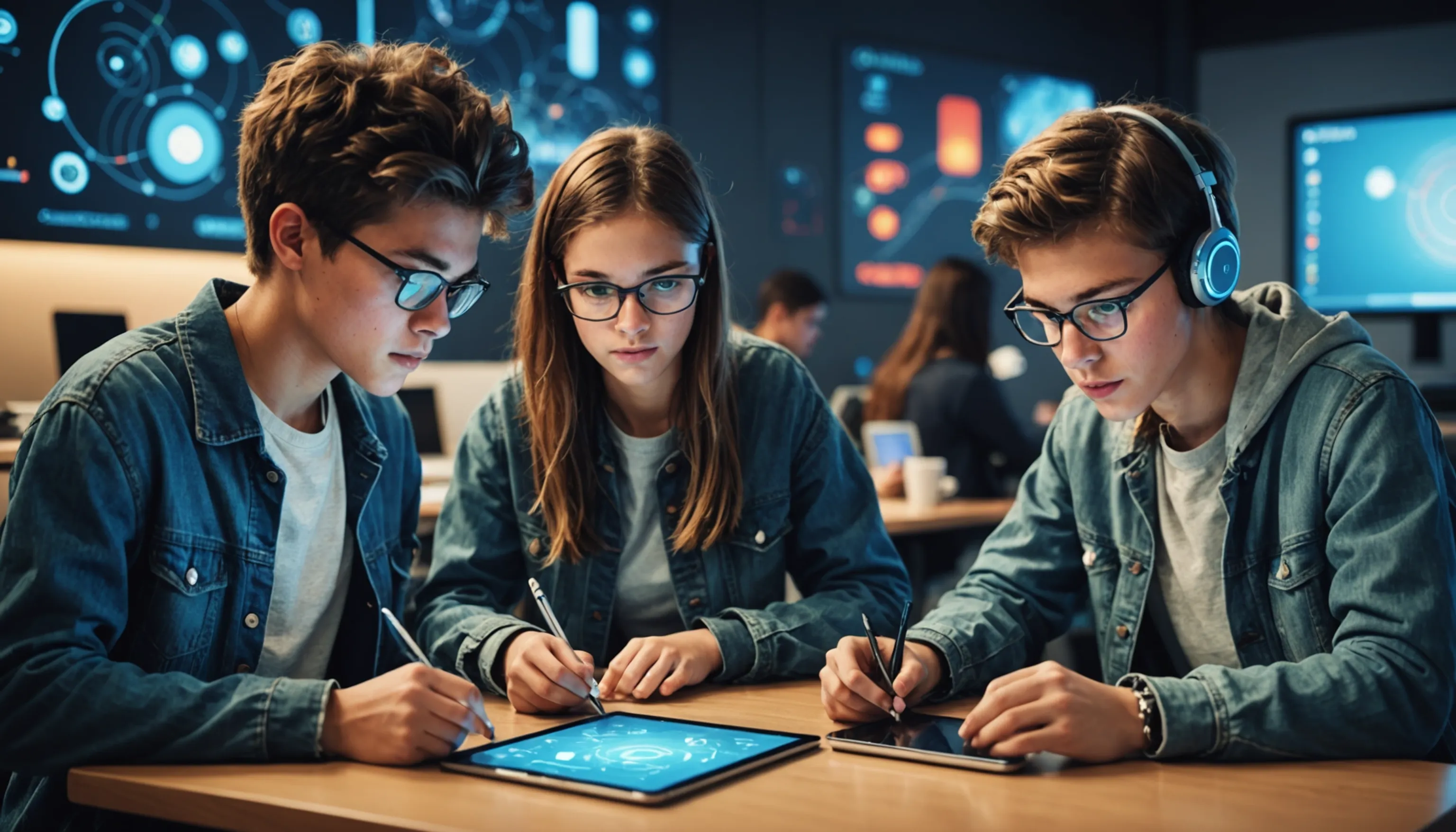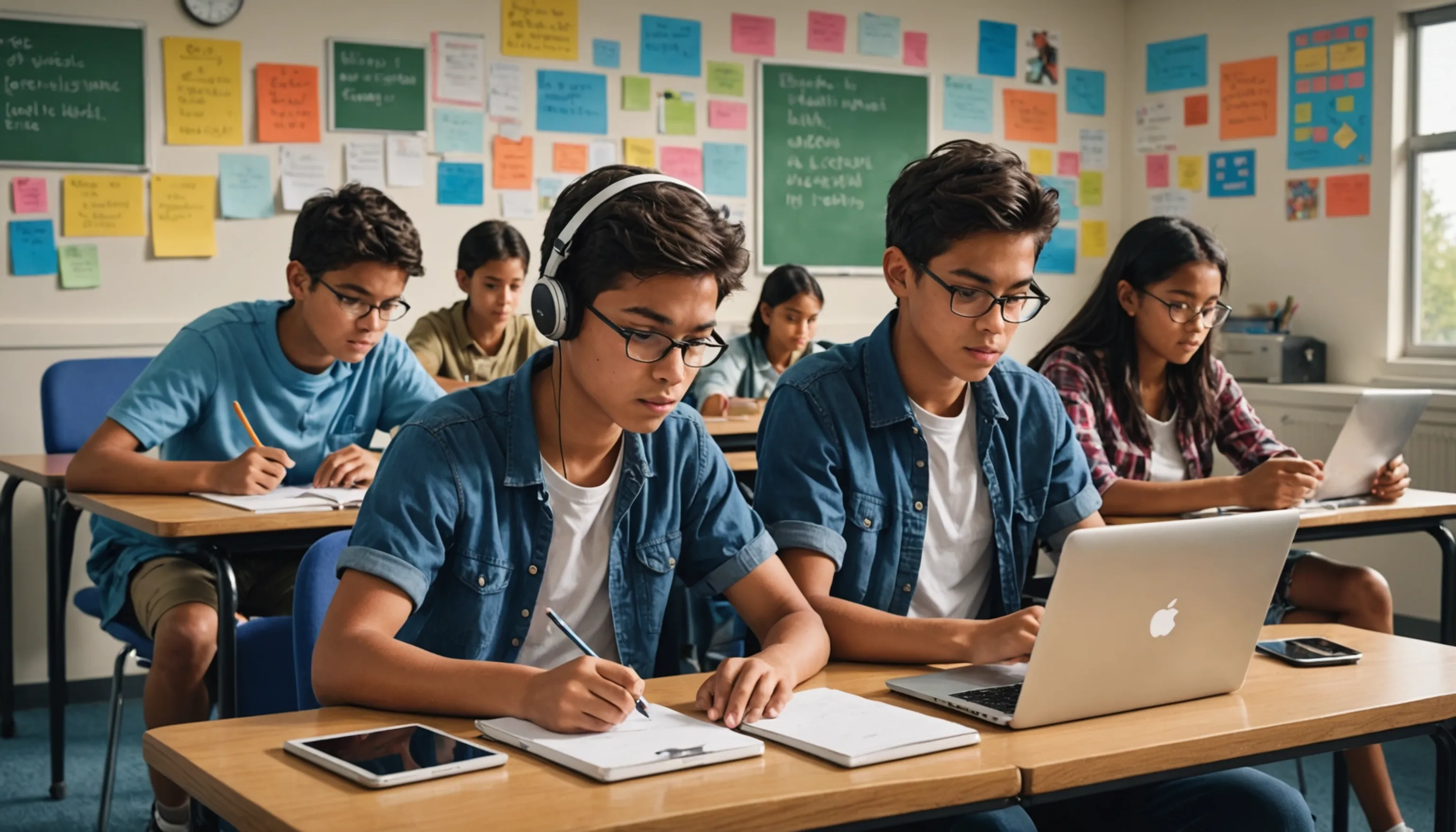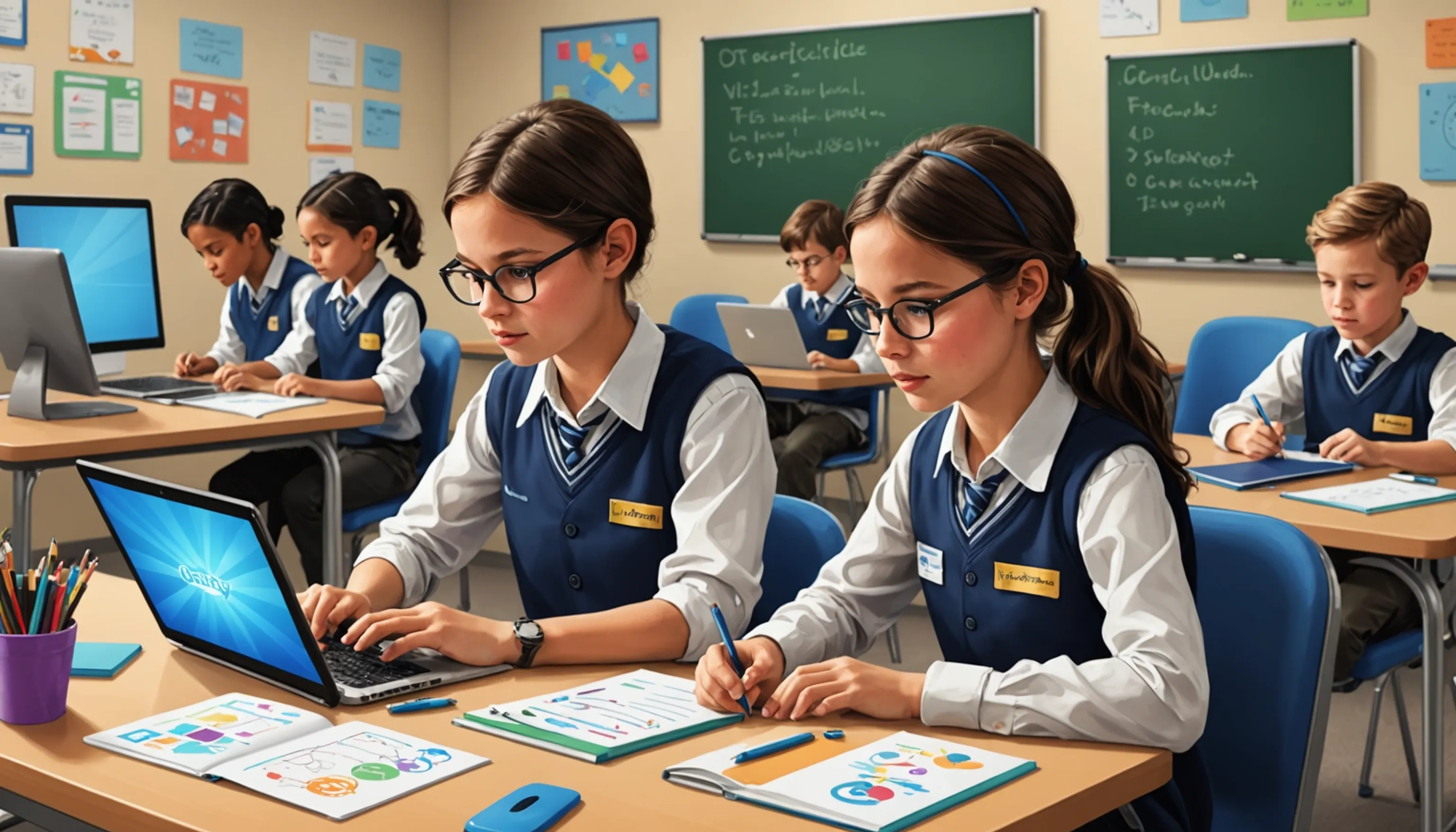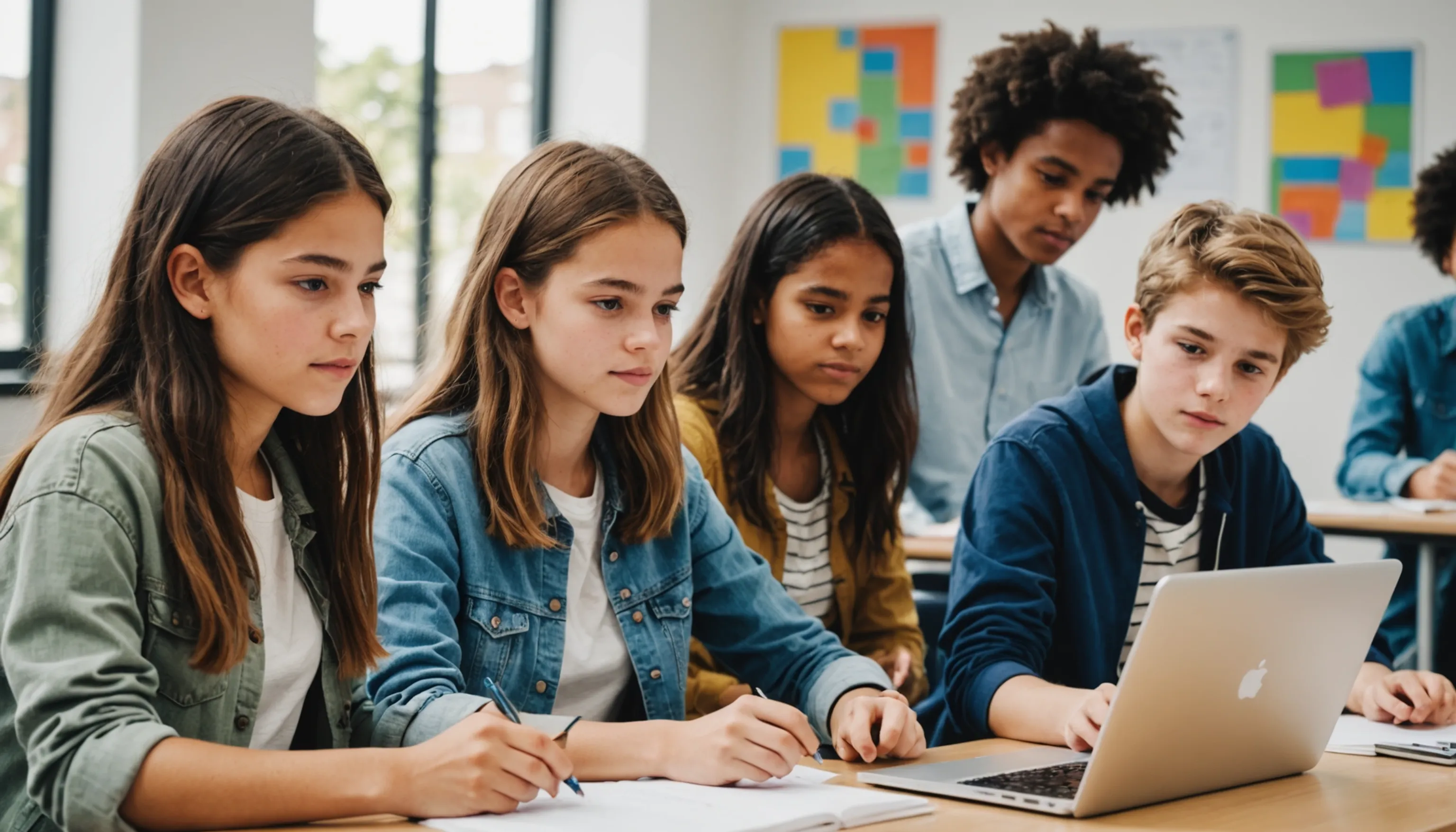Future Learning Models for a Digital World
 HvWHenry van Wagenberg
HvWHenry van Wagenberg
Future Learning Models for a Digital World
As education evolves, future learning models for a digital world are becoming essential. These models leverage technology to enhance learning experiences for teenagers. By integrating tools like virtual classrooms and online resources, educators can create engaging environments that cater to diverse learning styles.
Moreover, digital learning fosters collaboration among students, enabling them to work together on projects, share ideas, and develop critical thinking skills. This shift towards technology-driven education not only prepares teens for a rapidly changing workforce but also empowers them to take control of their learning journey.
Understanding Digital Learning Models
Understanding digital learning models is crucial for parents and teachers navigating the modern educational landscape. Digital learning encompasses a variety of approaches that use technology to facilitate learning, including online courses, blended learning, and flipped classrooms. These models differ from traditional educational methods by emphasizing flexibility, accessibility, and interactivity.
In a purely online learning environment, students engage with course materials through platforms that deliver content via videos, quizzes, and interactive assignments. This method allows learners to progress at their own pace, accommodating different learning speeds and styles. For example, a teen struggling with a particular concept can revisit lectures or participate in forums to deepen their understanding.
Blended learning combines traditional face-to-face instruction with online elements, creating a hybrid model that maximizes the strengths of both approaches. This model encourages students to engage with digital content outside the classroom while benefiting from direct interaction with instructors.
The flipped classroom model shifts the focus of learning. Students first explore content at home through videos or readings, then apply their knowledge during class time through discussions and hands-on activities. This approach promotes active learning and fosters a deeper understanding of the material.
Ultimately, understanding these digital learning models enables parents and teachers to support teens effectively, ensuring they thrive in an increasingly digital educational environment.
Benefits of Digital Learning for Teens
The benefits of digital learning for teens are numerous and impactful, making it a vital component of modern education. One of the most significant advantages is the flexibility it offers. Teens can access learning materials anytime and anywhere, allowing them to study at their own pace. This adaptability caters to their individual learning styles, helping them grasp concepts more effectively.
Moreover, digital learning promotes engagement through interactive content. Many online platforms incorporate multimedia resources like videos, quizzes, and gamified elements that make learning enjoyable. This increased engagement can lead to higher retention rates and a more profound understanding of the subject matter.
Another key benefit is the development of essential digital skills. In today’s technology-driven world, being proficient in digital tools is crucial. Digital learning equips teens with the skills necessary to navigate various software, collaborate online, and communicate effectively, preparing them for future academic and career opportunities.
Additionally, digital learning fosters greater collaboration among students. Online platforms often provide tools for group projects, discussions, and peer feedback, encouraging teamwork and communication. This collaborative environment helps teens develop critical social skills that are vital for success in the workplace.
Finally, digital learning can address diverse learning needs. With access to a wide range of resources, including adaptive learning technologies, students with different abilities can find materials that suit their requirements, promoting inclusivity in education. Overall, digital learning empowers teens to take charge of their education and prepares them for a successful future.

Challenges of Implementing Digital Learning Models
Implementing digital learning models presents several challenges that educators, parents, and students must navigate. One of the primary obstacles is the digital divide, which refers to the gap between those who have access to technology and the internet and those who do not. Many students, particularly in low-income areas, may lack reliable devices or internet connectivity, hindering their ability to engage fully in digital learning.
Another significant challenge is the need for proper training and support for both teachers and students. Educators must be proficient in using digital tools and platforms to effectively teach and facilitate learning. Without adequate professional development, teachers may struggle to integrate technology into their lessons, resulting in a less effective learning experience.
Furthermore, digital learning can lead to issues related to student motivation and engagement. Some teens may find it difficult to stay focused in an online environment, leading to decreased participation and lower academic performance. This challenge is compounded by the potential for distractions, as students may be tempted to multitask or engage in non-educational activities while learning.
Additionally, ensuring the quality of digital content is crucial. Not all online resources are reliable or academically sound, which can lead to misinformation and confusion among students. Educators must carefully vet materials and provide guidance on credible sources.
Lastly, the shift to digital learning can create feelings of isolation among students, as they may miss the social interaction that traditional classroom settings provide. Addressing these challenges requires a collaborative effort from educators, parents, and policymakers to create an effective and inclusive digital learning environment.
Personalized Learning in the Digital Age
Personalized learning in the digital age revolutionizes how students engage with education. This approach tailors the learning experience to meet the unique needs, interests, and pace of each teen. By utilizing technology, educators can create customized pathways that allow students to explore subjects in-depth or accelerate their progress in areas of strength.
Moreover, digital tools enable real-time feedback, empowering students to take ownership of their learning journey. As a result, personalized learning fosters greater motivation and enhances academic achievement, equipping teens with the skills and knowledge needed for success in a rapidly evolving world.
What is Personalized Learning?
Personalized learning is an educational approach that tailors instruction to meet the individual needs, preferences, and interests of each student. Unlike traditional models, where all students follow the same curriculum at the same pace, personalized learning recognizes that each learner is unique and may require different pathways to achieve their academic goals.
At its core, personalized learning involves understanding a student's strengths, weaknesses, and learning style. This understanding allows educators to create customized learning experiences that can include individualized lesson plans, targeted resources, and varied assessment methods. For instance, a student struggling with algebra may receive additional resources such as interactive online tutorials or one-on-one tutoring sessions.
Technology plays a crucial role in facilitating personalized learning. Learning management systems and educational software can track student progress in real-time, providing data that educators can use to adjust instruction as needed. This data-driven approach allows for immediate interventions, ensuring that no student falls behind.
Moreover, personalized learning encourages student agency. Students are often given choices regarding their learning paths, allowing them to explore topics that interest them and set their own goals. This autonomy fosters a sense of ownership over their education, which can lead to increased motivation and engagement.
In summary, personalized learning is a dynamic and flexible approach that prioritizes the individual learner, utilizing technology and tailored instruction to create a more effective and engaging educational experience.

Technology's Role in Personalized Learning
Technology plays a pivotal role in personalized learning, enhancing the educational experience for students and enabling educators to tailor instruction effectively. Here are several ways technology facilitates personalized learning:
- Data Collection and Analysis: Technology allows for the collection of vast amounts of data on student performance. This data can be analyzed to identify individual strengths and weaknesses, enabling teachers to tailor their instruction accordingly.
- Adaptive Learning Platforms: These platforms adjust the difficulty of tasks based on student performance. If a student excels at a particular concept, the platform can provide more challenging material, while offering additional support for those who struggle.
- Access to Diverse Resources: Technology provides students with access to a wide range of learning resources, including videos, articles, and interactive simulations. This variety accommodates different learning styles and interests.
- Real-Time Feedback: Digital tools can offer immediate feedback on assessments and assignments. This instant response helps students understand their mistakes and learn from them in real-time.
- Collaboration Tools: Technology facilitates collaboration among students through platforms that allow for group projects and discussions, fostering teamwork and communication skills.
As a result, technology not only supports personalized learning but also encourages student engagement and motivation. By leveraging these tools, educators can create a dynamic learning environment that meets the unique needs of each student, preparing them for success in an increasingly digital world.
Examples of Personalized Learning Platforms
There are numerous personalized learning platforms available that cater to the diverse needs of students, leveraging technology to enhance educational experiences. Here are some notable examples:
- Khan Academy: This platform offers a wide range of subjects with instructional videos and practice exercises. Students can progress at their own pace, receiving personalized recommendations based on their performance and areas of difficulty.
- DreamBox Learning: Focused on mathematics, DreamBox adapts to each student's learning style and pace. It uses real-time data to provide tailored lessons and feedback, ensuring that learners grasp concepts before moving on.
- IXL: IXL provides personalized practice in various subjects, adjusting the difficulty level based on student responses. It offers detailed analytics, allowing educators to track progress and identify areas needing improvement.
- Nearpod: This interactive platform enables teachers to create personalized lessons that incorporate multimedia elements. Students can engage with the content through quizzes, polls, and collaborative activities, fostering a more active learning environment.
- Edmodo: As a social learning platform, Edmodo allows teachers to create personalized learning experiences by sharing resources, assignments, and feedback within a collaborative community.
These platforms exemplify how technology can enhance personalized learning by providing tailored resources, real-time feedback, and adaptive learning pathways. By embracing these tools, educators can better support each student's unique learning journey, ultimately improving academic outcomes and fostering a love for learning.
Collaborative Learning in a Digital Environment
Collaborative learning in a digital environment refers to educational practices that encourage students to work together online, leveraging technology to enhance their learning experiences. This approach fosters teamwork, communication, and critical thinking skills, essential for success in today’s interconnected world.
In a digital setting, collaborative learning can take many forms, including:
- Group Projects: Students can collaborate on projects using platforms like Google Workspace, allowing real-time editing and feedback.
- Discussion Forums: Online discussion boards enable students to share ideas, ask questions, and engage in meaningful dialogue with their peers.
- Virtual Classrooms: Tools like Zoom and Microsoft Teams facilitate live discussions and group activities, promoting interaction among students.
By integrating collaborative learning into digital education, students not only enhance their academic skills but also develop important social skills, preparing them for future collaborative endeavors in both their personal and professional lives.
Importance of Collaboration Among Teens
The importance of collaboration among teens cannot be overstated, especially in today's interconnected world. Collaborative learning helps students develop vital social skills, enhances their academic performance, and prepares them for future careers. Here are several reasons why collaboration is essential:
- Enhanced Problem-Solving Skills: Working in groups allows teens to tackle complex problems together, combining their strengths and perspectives. This collaborative approach fosters critical thinking and creativity, leading to more effective solutions.
- Improved Communication: Collaboration encourages teens to express their ideas and listen to others. These interactions build strong communication skills, essential for academic success and future workplaces.
- Increased Engagement: Group activities often make learning more enjoyable. When teens collaborate, they feel a sense of belonging and motivation, leading to greater engagement in their studies.
- Development of Empathy and Respect: Collaborating with diverse peers teaches teens to appreciate different viewpoints and backgrounds. This exposure fosters empathy, respect, and understanding, crucial for building healthy relationships.
- Preparation for Future Careers: Most careers require teamwork. By engaging in collaborative learning, teens develop the skills needed to work effectively in teams, preparing them for success in their professional lives.
In conclusion, promoting collaboration among teens is vital for their personal, academic, and professional growth, equipping them with the skills necessary to navigate an increasingly complex world.
Tools for Collaborative Learning
In the digital age, a variety of tools for collaborative learning are available to enhance teamwork among students. These tools not only facilitate communication but also streamline the collaboration process, making learning more engaging and effective. Here are some popular tools that support collaborative learning:
- Google Workspace: This suite of tools, including Docs, Sheets, and Slides, allows multiple users to work on documents simultaneously. Students can edit, comment, and share feedback in real-time, promoting active collaboration.
- Miro: Miro is a digital whiteboard that enables teams to brainstorm ideas, create mind maps, and plan projects visually. Its interactive features encourage creativity and collective problem-solving.
- Trello: Trello is a project management tool that helps students organize tasks and collaborate on projects. With its visual boards, students can assign tasks, set deadlines, and track progress collectively.
- Slack: Slack is a communication platform that allows students to create channels for specific projects or topics. It facilitates real-time communication through messaging and file sharing, keeping everyone connected.
- Padlet: Padlet is an interactive platform where students can post ideas, links, and images on a virtual board. This tool encourages brainstorming and idea sharing in a visually appealing manner.
By utilizing these collaborative learning tools, educators can foster teamwork, enhance student engagement, and prepare teens for future collaborative environments, both academically and professionally.
How to Foster Collaboration at Home and School
Fostering collaboration at home and school is essential for developing teamwork skills among teens. Here are effective strategies to encourage collaborative learning in both environments:
- Encourage Group Projects: At school, teachers can assign group projects that require students to work together toward a common goal. These projects should promote sharing ideas and dividing tasks based on individual strengths, fostering a sense of accountability.
- Create a Collaborative Environment at Home: Parents can set up spaces for group study or family discussions where everyone feels comfortable sharing their thoughts. This can include regular family meetings to discuss schoolwork or projects.
- Utilize Technology: Leverage online tools like Google Workspace, Slack, or Trello for collaborative tasks. Encourage teens to use these platforms for school projects or group assignments, allowing them to practice digital collaboration.
- Model Collaborative Behavior: Adults can demonstrate collaboration in their own work and family interactions. Show how to listen, compromise, and appreciate different perspectives, setting a positive example for teens.
- Encourage Open Communication: Create an environment where students feel safe expressing their ideas and opinions. Encourage respectful discussions about differing viewpoints, which is crucial for effective collaboration.
- Promote Extracurricular Activities: Encourage participation in clubs or team sports where collaboration is essential. These activities help teens develop teamwork skills in a fun and engaging way.
By implementing these strategies, parents and educators can create a culture of collaboration, equipping teens with the skills necessary for success in school and beyond.
